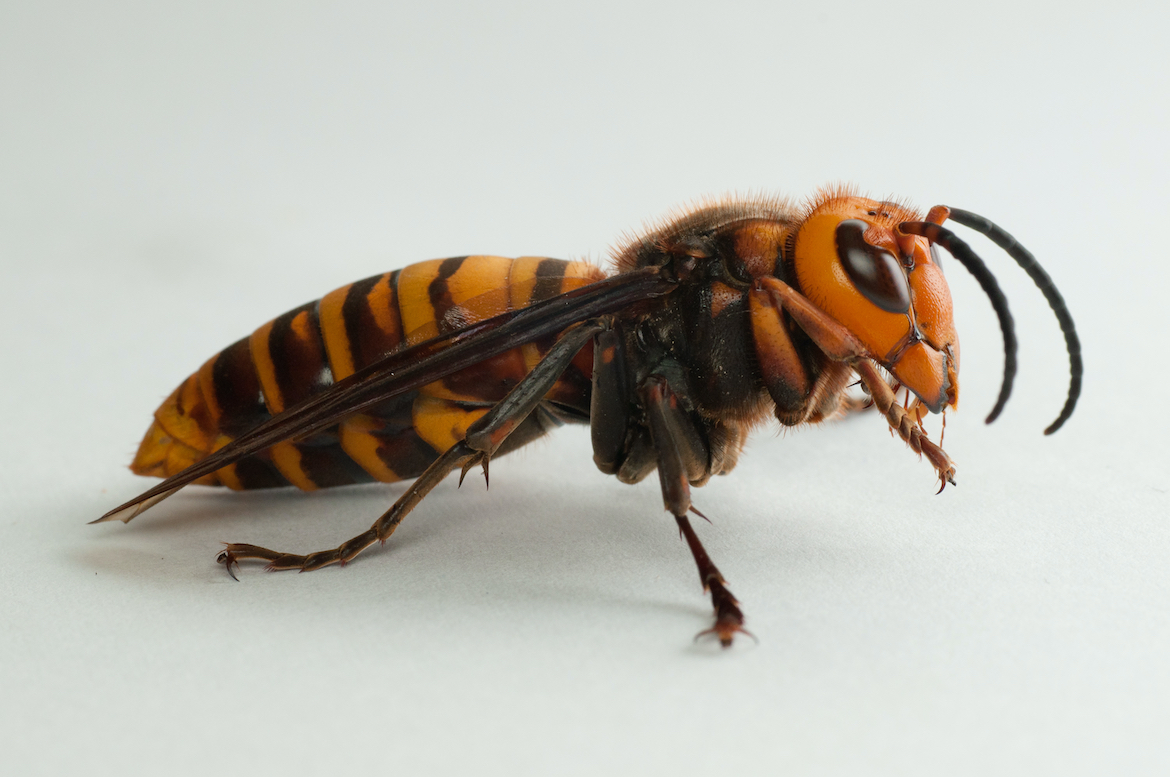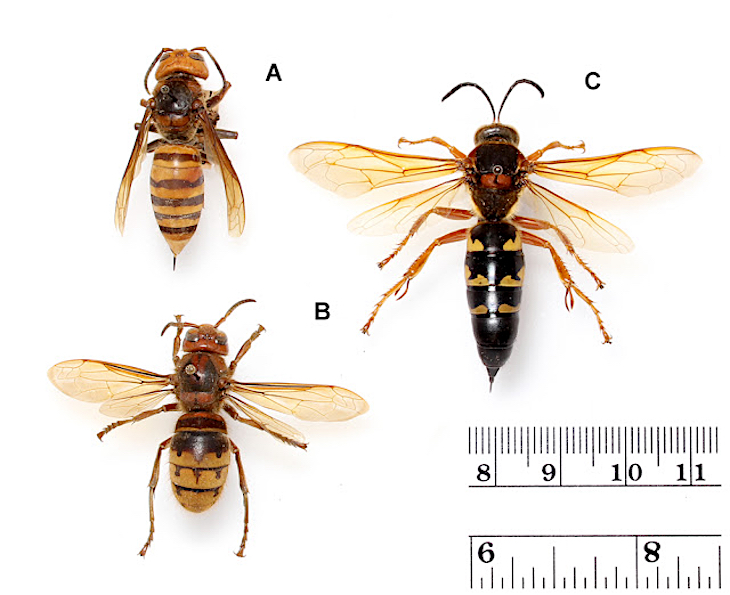
How to spot a 'murder hornet'
Wednesday, August 5, 2020
A native wasp species has many Oklahomans wondering if the invasive Asian giant hornet has made its way to Oklahoma.
There have been no confirmed sightings of the Asian giant hornet in Oklahoma, which is casually referred to as the “murder hornet,” but one harmless lookalike is getting a lot of attention — the eastern cicada killer.
Oklahoma State University associate professor of entomology and plant pathology Dr. Wyatt Hoback said Oklahomans are wise to ask questions, but he may be able to put many of them to rest. While there have been a handful of Asian giant hornet sightings in Washington state this year, Hoback said thousands of additional potential sightings have been ruled out.
And there’s more good news.
“[Eastern cicada killers] are solitary, not aggressive, and if they sting, it does not hurt much,” Hoback said.
Having subjected himself to various stings, including the eastern cicada killer, Hoback should know. And he said it’s easy to spot the difference when you know what to look for.
“The eastern cicada killer is very large and occurs around houses and yards,” he said. “It nests in the ground where there is loose soil. It hunts cicadas and drags them back to its nest. Some other species look more similar to the Asian giant hornet including the European hornet which occurs in extreme eastern Oklahoma and forms nests in trees, like the Asian giant hornet.
“Compared to the Asian giant hornet, the eastern cicada killer has a much smaller head. The Asian giant hornet has a large bright yellow head. The abdomen of the hornet consists of prominent yellow stripes while the cicada killer abdomen is mostly dark with broken yellow patches. In the picture below, ‘A’ is the murder hornet, ‘B’ the European hornet, and ‘C’ is the cicada killer.”
Hoback said the potential damage wrought by invasive species is a real concern, but for now Oklahomans don’t appear to have much to worry about, at least not as far as the Asian giant hornet is concerned.
“It’s good to keep an eye out for these things, because identifying them quickly can help state agencies prevent damage to habitats. But we still haven’t had a sighting in Oklahoma of the Asian giant hornet and hopefully it stays that way.”
MEDIA CONTACT: Mack Burke | Editorial Coordinator | 405.744.5540 | mack.burke_iv@okstate.edu

